
The Australian F1 Grand Prix is next weekend, 17-20 March, at Albert Park Grand Prix Circuit in Melbourne. Once the Formula One arrives on Australian shores, GP discussions rule the daily kitchen catch-ups in this office. But for those who know little about the F1 (like me), the conversations are harder to follow than Taylor Swift’s love life.
So, here is an easy breakdown of the big wide world of F1 to help you fake it till you make it.
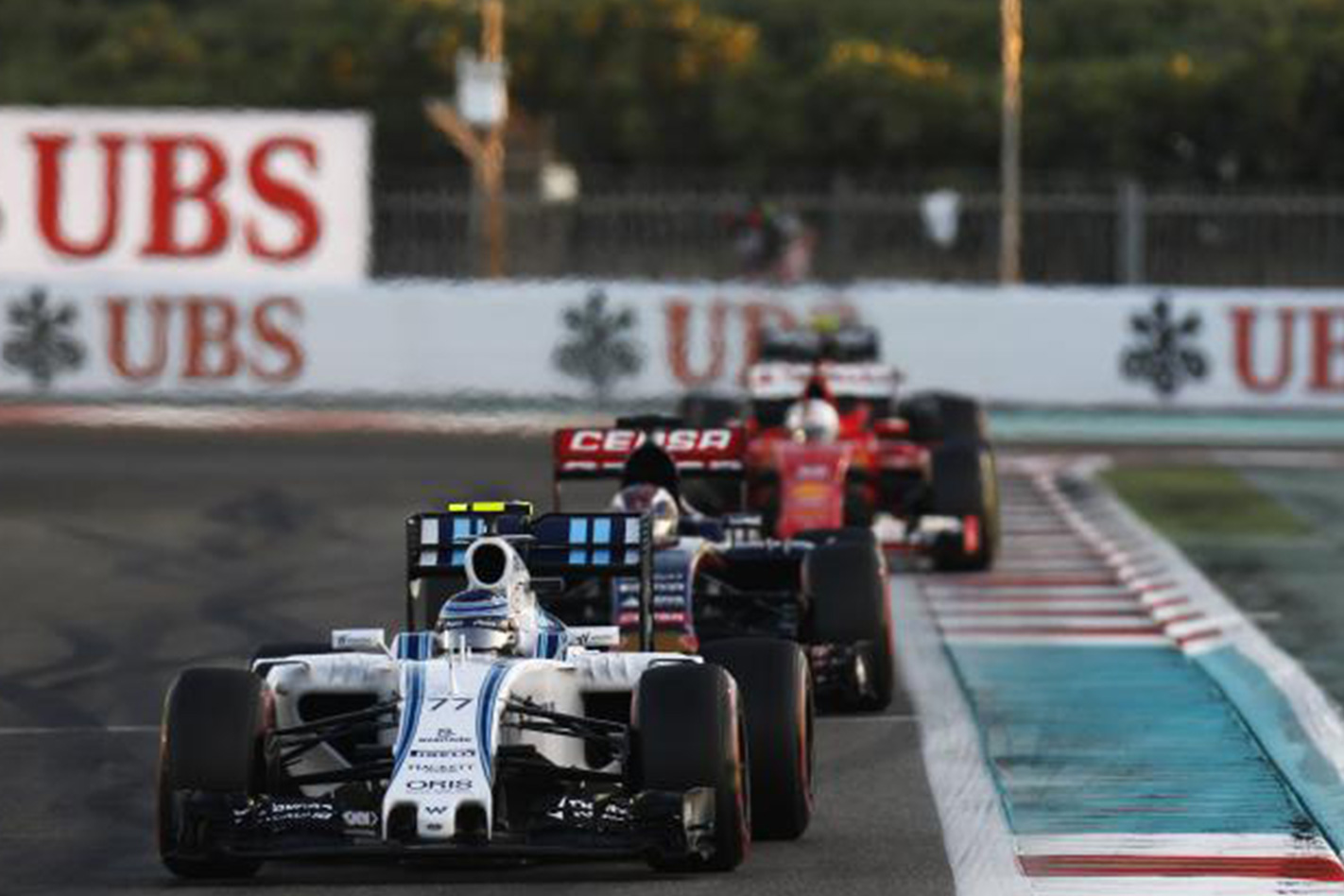
WHAT IS THE FORMULA ONE?
Chances are you have some idea of what the Grand Prix is about. At a basic level, it’s a bunch of really really fast cars, with one seat, driving around a racetrack.
Formula refers to the sport, or the set of rules in this style of racing. The ‘One’ refers to Formula One being the top tier of motor racing in the world. Grand Prix refers to the series of races, which as a group make up the FIA Formula One World Championship. FIA refers to the governing body of motorsports, Fédération Internationale de l’Automobile.
In 2016, 21 Grand Prix make up the World Championship, which is the most ever in a single season. The number of races varies each year.
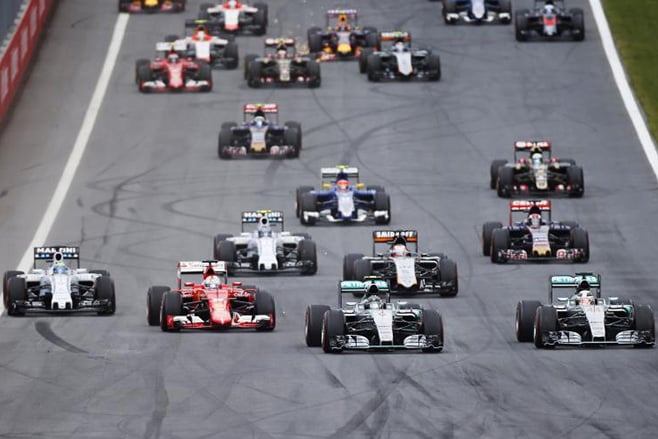
HOW DOES A GP WORK?
Grand Prix occur in a different country roughly every fortnight, with two practice sessions on the Friday, a practice and then a qualifying session on the Saturday, and the race on Sunday. Qualifying is run in three parts where drivers aim to achieve their fastest single lap time. Ultimately this determines their start position for the main race on Sunday. The person who records the fastest lap time in qualifying starts at the front of the main race – also known as pole position.
Round one of the Championship starts right here in Australia at the Melbourne Grand Prix.
TEAMS, COUNTRIES, DRIVERS AND CARS
In 2016 there are 11 Formula One teams with two cars and one driver per car. As F1 is a multi-national sport, each driver tends to align themselves with their country, but their heritage has little to do with racing or points.
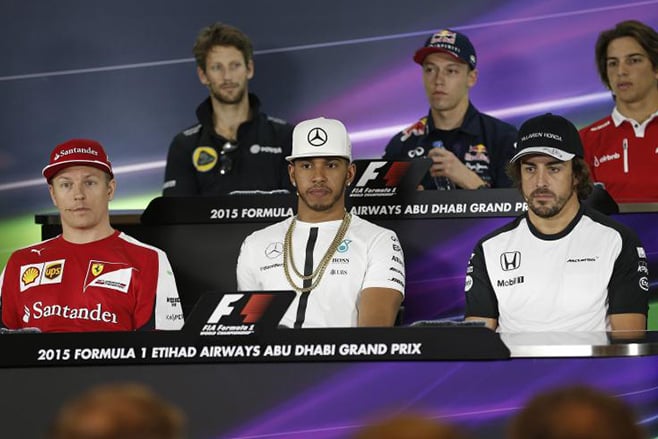
| Team | Driver |
| Scuderia Ferrari | Sebastian Vettel |
| u00a0 | Kimi Ru00e4ikku00f6nen |
| Sahara Force India Formula One | Sergio Pu00e9rez |
| u00a0 | Nico Hu00fclkenberg |
| u00a0Haas F1 Team | Romain Grosjean |
| u00a0 | Esteban Gutiu00e9rrez |
| McLaren Honda Formula 1 Team | Fernando Alonso |
| u00a0 | Jensen Button |
| Mercedes AMG Petronas Formula One Team | Nico Rosberg |
| u00a0 | Lewis Hamilton |
| Manor Racing MRT | Rio Haryanto |
| u00a0 | Pascal Wehrlein |
| Red Bull Racing | Daniel Ricciardo |
| u00a0 | Daniil Kvyat |
| Renault Sport Formula One Team | Kevin Magnussen |
| u00a0 | Jolyon Palmer |
| Sauber F1 Team | Marcus Ericsson |
| u00a0 | Felipe Nasr |
| Scuderia Toro Rosso | Max Verstappen |
| u00a0 | Carlos Sainz, Jr. |
| Williams Martini Racing | Felipe Massa |
| u00a0 | Valtteri Bottas |
POINTS, PITSTOPS AND PENALTIES
The system is easy – if you finish in the top 10 of a Grand Prix, you get points. At the end of the season, those points are tallied and the driver with the highest points wins the championship.
1st – 25 points
2nd – 18 points
3rd – 15 points
4th – 12 points
5th – 10 points
6th – 8 points
7th – 6 points
8th – 4 points
9th – 2 points
10th – 1 point
Pitstops are mandatory in races. There are two compounds (types) of tyres that must be used during the race, so pitstops are used to change tyres, but also fix any damage to a car.
For F1 fans, penalties are a hot topic. There are so many things drivers can receive a penalty for these days, it’s often a sore point for fans. Usually, penalties result in extra time in the pits, time added on at the end of the race or disqualification.
DANIEL RICCIARDO – LEARN THAT NAME
Chances are if you’re an Australian, you’ve already heard his name. Our very own, home-grown Formula One driver, Daniel Ricciardo, is the only Australian driver currently racing in Formula One. If you’re listening to Grand Prix conversations, you’re likely to hear his name, and after a tough 2015, we’re certain DRiccy is set for a massive 2016. Get amongst the bloke. Follow him on Instagram (@danielricciardo) and we guarantee you’ll love him as much as we do!
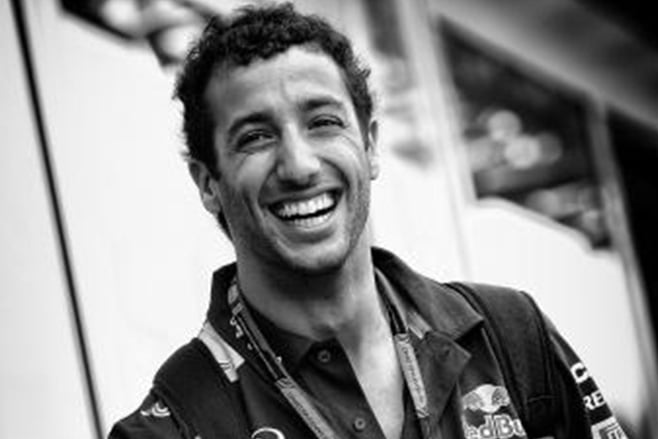
BATTLE OF THE EGOS AND THE ONES TO WATCH
There’s nothing Australians love more than a brilliant clash of egos, and those watching the F1 will be paying close attention to the relationship between Lewis Hamilton (pictured below) and Nico Rosberg. Hamilton won the 2015 Championship, followed closely by Nico Rosberg who had a brilliant second-half of the year. If arguments are your thing, this is about as exciting as it gets.
The youngsters are the ones to watch. Names like Max Verstappen (18) Carlos Sainz Jr (21) and Daniil Kvyat (21) are just a few of the kids making names for themselves.
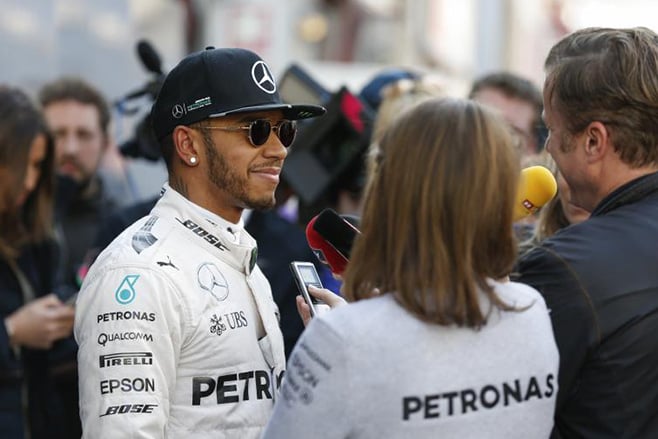
THE CHANGES
There’s been a lot of talk over cups of tea in our office on the 2016 changes. We won’t go into too much detail here because they can be quite complex, but knowing about them will really come in handy if you’re trying to join in on the conversation. Different tyre rules, different qualifying format, different engine restrictions, and the list goes on…
Fans of the sport are hoping development over the off-season may result in slower teams catching up and giving Mercedes-Benz a challenge. The Mercedes-Benz team are the current champions and look very strong again this year. Will there be change at the front? We will have to wait to find out.
The American based Haas F1 is a new team to enter the ranks this year. As a new team, they’re the underdog and while growing pains will probably stunt their position in the championship this year, it’d be a great story if the team proved us all wrong. Haas has received strong support from Ferrari in development and expertise, so you never know what could happen.



